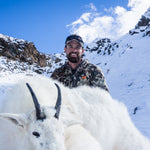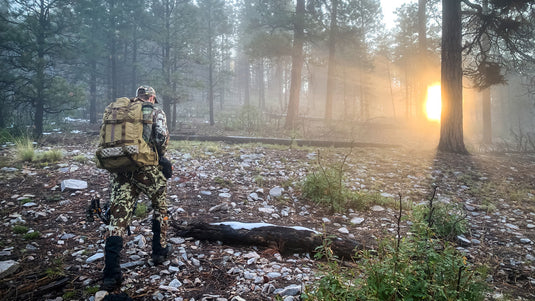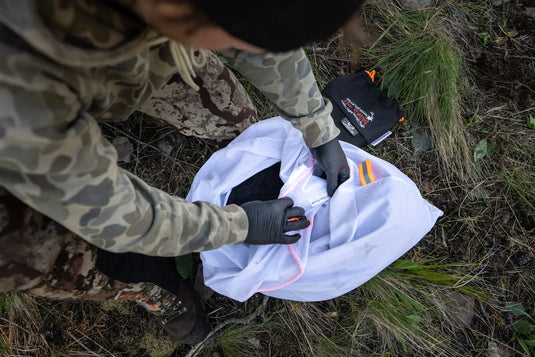As soon as one hunting season is over, it’s time to begin planning the next! And it’s time to start your research for big game applications here in Colorado and throughout the west. Here, we’ll attempt to answer some frequently asked questions about applying for the “big three” in Colorado. That is, bighorn sheep, mountain goat and moose.
Sheep, goat and moose are by far the most difficult big game tags to draw here in Colorado. However, unlike the preference point system for Colorado’s other big game species where all the tags go to the highest point holders, the draw system for these three species opens up the playing field. As long as you’ve been applying for at least three years, you have a chance to draw!

Sure, the odds of drawing a tag are low. However, the opportunity to hunt bighorn sheep, moose or mountain goat presents a unique, once in a lifetime experience. These are some of the most iconic big game species in North America.
Here are answers to some of the most frequently asked questions when it comes to applying for sheep, goat and moose in Colorado:
How Does the Draw Work?
The draw for sheep, goat and moose works differently than the draw for the rest of Colorado’s big game species.
Most of Colorado’s limited big game tags are distributed in a preference point system. Under this system, applicants apply for a limited license. If they are unsuccessful, they are given a preference point for that species. When tags are distributed in the draw, priority is given to those applicants with the highest number of preference points. For example, if there are only 10 tags for a given hunt and the top 10 applicants all have 15 or more preference points, you have a 0% chance of drawing with less than 15 points.
In the sheep, goat and moose draw, the playing field is open to more applicants. All applicants with at least 3 preference points have a chance to draw.

In each of the first three years that you apply for sheep, goat or moose in Colorado, you will earn one preference point per species. Once you reach that 3-point threshold, you are then eligible to draw a tag, starting on your 4th year of applying.
After your third year, you will no longer accumulate preference points. But you can keep accumulating what Colorado Parks and Wildlife (CPW) calls, “weighted points”. These weighted points give you just a slight statistical advantage. However, it is NOT a preference point. While someone who has 10 weighted points has a slight statistical advantage over someone with 5 weighted points, it’s still a lottery and anyone with at least three preference points could draw!
Once you have reached that 3-preference-point threshold, continuing to accumulate weighted points is optional. It’s a $50 fee per point for Colorado residents and a $100 fee per point for nonresidents.
What are My Chances at Drawing?
The draw odds for all of these species are low, usually less than 10% and in some cases, less than 1%. The best way to assess your draw odds across all hunting units and seasons it to use the Filtering 2.0 tool from our friends at GoHunt. In general, the most difficult tags to draw are bull moose, bighorn ram and either-sex mountain goat in that order. While cow moose, ewe sheep and nanny goat tags are a bit easier to draw, it’s still not easy.

The biggest factor in your draw odds will be your residency. Colorado residents have more tags available and a higher chance of drawing across the board.
Despite the long odds to draw one of these tags, remember that you have a legitimate shot at drawing as soon as you’ve reached that 3-preference-point threshold. For the chance to go on a special once in a lifetime hunt, it’s worth the effort to apply!
Which Units Should I Apply For?
As with any big game hunt, deciding where to apply or where to go begins with setting your goals. Until you’ve defined your expectations, it’s difficult to decide which unit or season makes the most sense.
Are you determined to pursue a certain trophy quality? Is there a specific area you really want to hunt? Or do you just want the chance to hunt, even if you have to sacrifice trophy quality or hunt a less-desirable unit? Do you want a hunt that has easy access? Or are you willing to embark on a more difficult backpacking style hunt?

Once you’ve outlined your goals and expectations, you can then begin looking to see what units and seasons are available for each species that meet those requirements. Again, use the Filtering 2.0 tools at GoHunt.com to sort through all the options.
Be aware that units with higher draw odds usually have those draw odds for a reason. Access or private land might be an issue. Or it might be an area known to have very low animal densities. Whatever the case, be sure and research those things before you apply to make sure you’re willing to accept those factors.
On the other side of that coin, you might notice that some units have extremely low draw odds. These tend to be bighorn ram and bull moose units with very high trophy quality, very visible populations of animals, or both. Draw odds for these units can be less than 1%. Is it worth applying in one of these ultra-high demand units, knowing that you might never draw a tag? Refer back to your goals and expectations. Some folks would rather not draw than go hunting in any other unit. For others, it makes sense to apply elsewhere, where the odds are slightly better.

How Do I Apply?
To get started, you will need an account on the CPW website at CPWShop.com. If you don’t already have a CPW account, follow the prompts to create one.
Next, take some time to read the Colorado Big Game brochure (which contains the moose regulations) and the separate Colorado Sheep and Goat brochure. The updated versions of these brochures are released in February each year.
The application period begins in March and the deadline to apply is always the first Tuesday in April. Anytime during that window, log into your CPW account and follow the instructions to apply.
When you apply, always put your desired tag in the first choice entry. All sheep, goat and moose tags will sell out in the first choice round so there is no sense in applying for a second choice. Until you are at the 3-preference-point level, you can apply for a point only. Once you’ve reached 3 points, you can begin applying for a license!
Best of luck in the draw and we hope you have some memorable hunting adventures in your future! As always, be sure to check out all of the great hunting gear we carry here in the Caribou Gear shop. The items we carry are ones that we personally use and have tested in the field. Find what you need for your next trip and please don’t hesitate to reach out with any questions.

By Ryan McSparran
Ryan is a hunting guide based in Colorado, and is proud to be a part of the team at Caribou Gear.















Great article!
Thanks
I think the missing info is how the tags are awarded. Every application with 3 or more points is issued a random number. That number is then divided by the number of weighted points an applicant has. Applicants with the lowest final numbers are awarded the available number of tags. So drawing a low number initially will often determine who is awarded the tags. I’ve read articles that conclude that once a person has 10 or more weighted points, their odds of drawings don’t increase significantly by accumulating more weighted points.